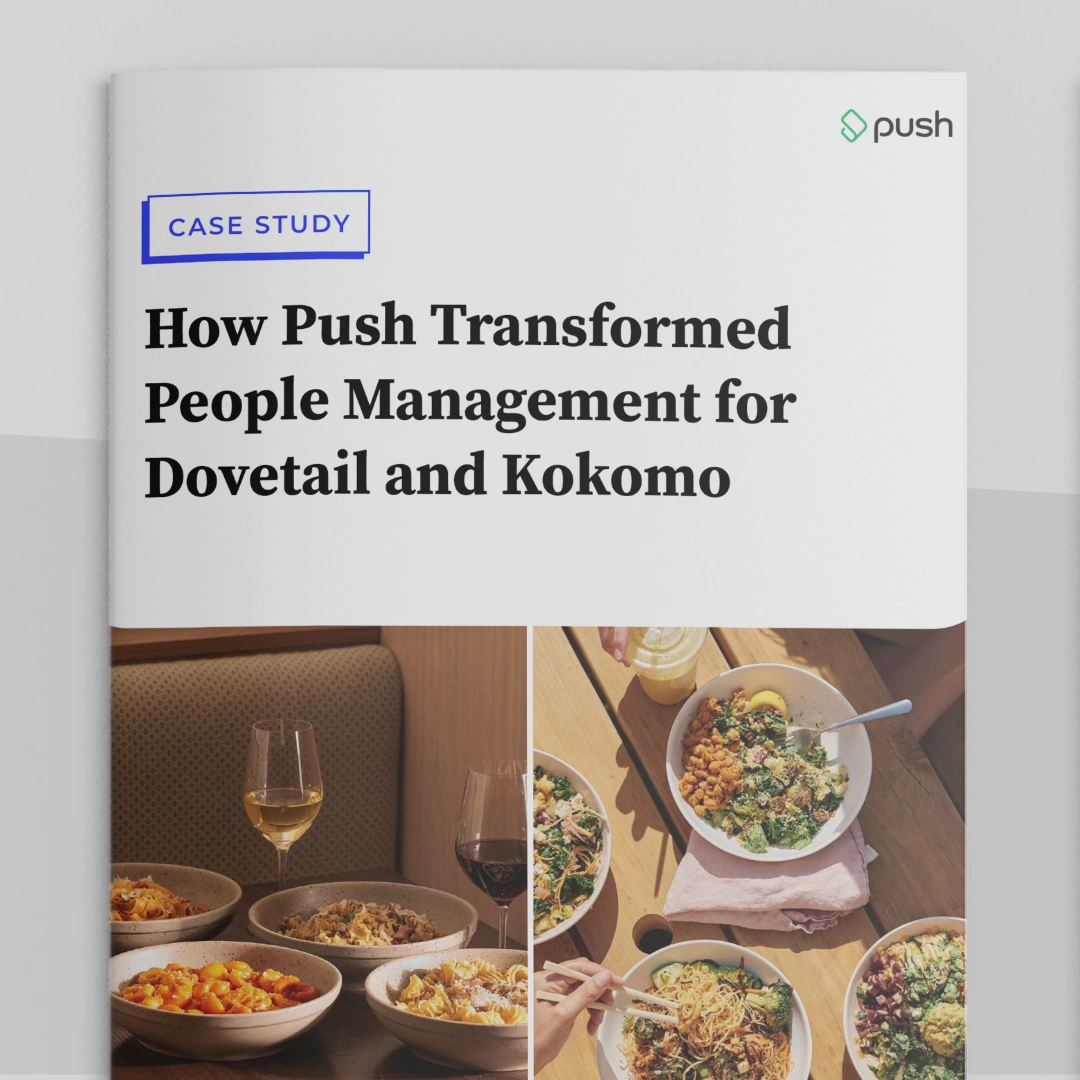
From Crumbs to Control

How Tabule Serves Up Smarter Scheduling

How Gusto 54 Is Building a Culinary Empire

How Push Transformed People Management for Dovetail and Kokomo

How Push Became a Key Ingredient in Tacofino's Recipe for Success

How Push Became a Key Ingredient in Earls’ Recipe for Success

Why Award-Winning Vintage Group Chose Push | Case Study

Village Ice Cream Saved 468 Hours With Push!

Why 700+ Location ZZA Hospitality Chose Push

How Denny's Saved 15,600 Hours Yearly With Push

Juicing Up Efficiency: Learn How Push Saves Booster Juice $91,200 Annually

How Push Helped Freshii Save 576 Hours Per Year

How Hudsons Pub Saves 45 Hours Bi-Weekly
Save Time and Money With Push
Value proposition

12 hrs+
Time savings per week
3%
Savings on labor costs
10 min
One-click payroll processing
Book a Free Consultation
Sharp tools make light work. Book a demo today to see how Push can be the secret ingredient to your business.
Awarded for What We Do Best
Awards
Thank you! Your submission has been received!
Oops! Something went wrong while submitting the form.





















